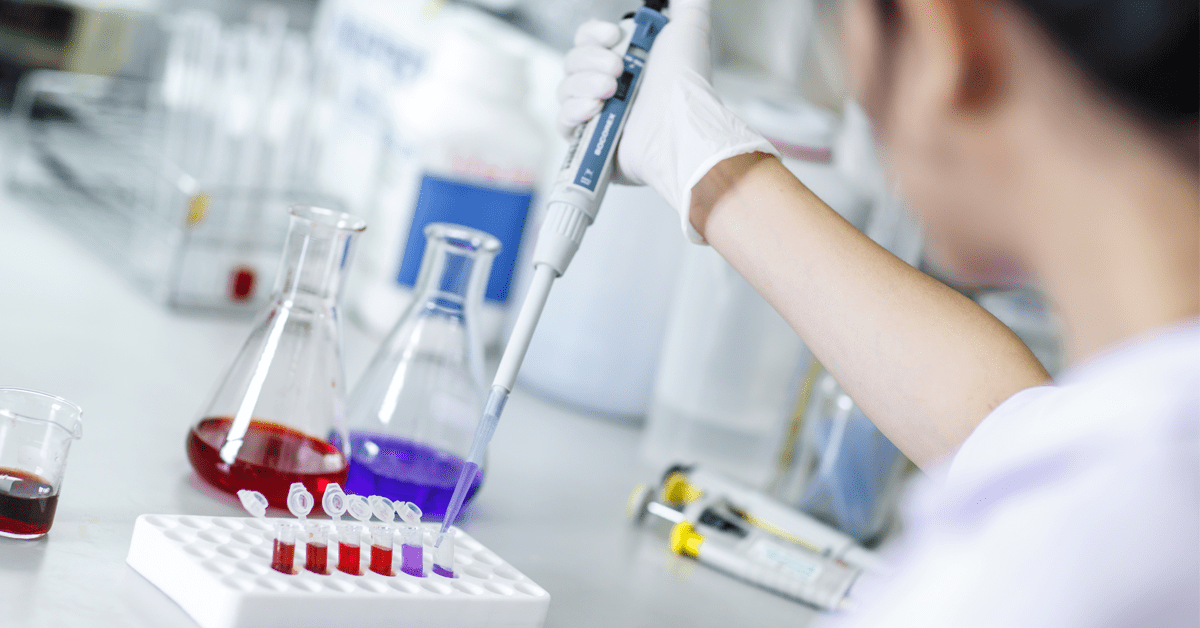Scientists often spend several hours a day pipetting. If the work isn’t done properly, with the right tools and skillsets, lab technicians can end up with sample loss or contamination, project delays and even physical injuries. These risks demonstrate why proper pipetting practices are so important, but where should you begin to make changes?
Here are three top tips from Evolve that you can start doing today to help reduce time spent pipetting, improve liquid handling accuracy, mitigate risk of injury and start pipetting like a pro.
1. Pick the right pipette
Before you even begin pipetting, make sure the tool you’re using is right for the job. Pipettes come in a variety of different models and sizes for a reason. Make sure you are considering both the type of sample – is it aqueous or viscous? – and the volume you are transferring.
If you are handling heavier liquids, consider using a positive displacement pipette, as opposed to an air displacement pipette which is better suited to lighter, thinner liquids. Similarly, you’ll want to select a pipette with a working range appropriate for the sample volume you are handling. If the task at hand requires repeated dispensing of the same volume or reagent, consider a repeater/stepper pipette or use an electronic pipette with a multi-dispensing function.
2. Practice proper pipetting procedures
The right tool won’t take you far if it’s being used incorrectly. It’s easy to go on autopilot when carrying out a task like pipetting. Electronic pipettes are becoming popular because they automate many of the steps in the standard pipetting procedure, offering digital functions to adjust volume, dispense liquid and even electronically eject a tip. However, even with electronic pipettes it is important to realise the factors affecting your work so you are able to reach the best results.
Below are the steps to properly use a manual air-displacement pipette, a process that incorporates fundamental pipetting actions that any liquid handler should know:
- Set the volume on the pipette.
- Depress the plunger.
- Immerse the tip to the specified depth and release the plunger to its resting position slowly. The pipette should be kept straight for the most accurate aspiration.
- Wait for the liquid to flow into the tip. When handling higher volumes, it is recommended to wait a few moments for the liquid to level off and the pressure inside the tip to settle.
- Holding the pipette at 10-45 degrees, place it against the wall of the receiving chamber and depress the plunger to the first stop.
- Wait one second and then depress the plunger to the second stop.
- Slide the tip up the vessel wall to remove any residual liquid from the outer tip surfaces of the pipette. Return plunger to a resting position.

3. Be mindful of posture and grip
With the right pipette and fundamental know-how at the ready, the last step to perfecting the process is your posture. The concentration required for pipetting makes it easy to overlook factors like your stance and grip, but it’s important to be mindful of them. Best practices include:
- Pipetting at a workstation aligned to your height – a lab bench that is too tall or short for your physique can place undue pressure on upper limbs or cause unnecessary hunching that can lead to back and neck strain.
- Having a lumbar-supporting chair at the ready – this is particularly important if you’ll be pipetting for hours on end. An adjustable chair is ideal so it can be customized to the user. Ensure your feet are resting comfortably on the floor and that the chair sits at a height appropriate to the workbench, so you can sit close to the pipetting station.
- Relaxing your wrist – ensure it is not extended, flexed or rotated. If you’re experiencing any of these positions, consider selecting a different pipette that conforms to your grip.
- Testing thumb pressure – your thumb should not have to apply significant force to transfer liquids or eject tips. This could aggravate hand, shoulder and back muscles if done regularly or for prolonged periods of time. If this is a recurring problem, think about switching to a pipette designed with ergonomic considerations in mind.
- Placing your solutions, samples and other equipment within reach – make sure everything you need is within your grasp before you start pipetting to avoid uncomfortable twisting, bending or stretching.
Adrian Balghy, Sales Executive at Evolve, said: ‘How you pipette directly affects the success and repeatability of your experiments. We all know it can be tedious at times, but it doesn’t have to be uncomfortable or frustrating. Consider these tips before beginning your next project for an efficient, reliable, and ergonomic pipetting experience. To find the right pipetting solution for you, get in touch with our experts at Evolve today.’
Easy laboratory automation
Evolve partner Andrew Alliance develops pipetting robots and systems for the pharmaceutical industry. The company has launched the Andrew+ Pipetting Robot, which does more than just automate pipetting thanks to an expanding range of Andrew+ accessories.
Andrew+ is part of the groundbreaking OneLab ecosystem, allowing you to effortlessly transition from laborious manual pipetting procedures to error-free, fully-robotised lab workflows – without any knowledge of automation engineering.
Ask your Evolve expert for more information about Andrew+, or watch the video, below:
Leading laboratory equipment supplier in Malta
Whatever your next step, we’ll be by your side with world class service.
Evolve is Malta’s fastest-growing science company, offering laboratory design, the widest range of lab chemicals, scientific consultancy services and medical equipment from internationally-trusted brands.
We offer a comprehensive range of scientific equipment and medical supplies, shaped to suit the needs of hospitals, clinics, heritage sites, school labs, universities, private labs and pharmaceutical companies.
To find out about how Evolve can help you take your next step, get in touch with us today.


